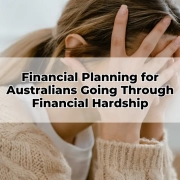How does long term financial planning work?
How does long term financial planning work?
Financial planning is a process. This is the reason it is often more expensive than people expect. Some even expect it to be free, but like everything else, there are no free lunches. If your super fund is providing limited free advice, they are likely conflicted and not going to suggest or compare external products, which is basically the role of financial advice-to recommend suitable products and strategies for someone’s personal circumstances. Commissions are banned on all superannuation and investment products, and Wealth Factory does not receive them on products it recommends, except insurance. For an additional fee, it is an option to remove insurance commission; by default, we accept them to keep financial advice more affordable.
The long term financial planning process begins with a fact-finding meeting, which is basically an opportunity to get to know one another and discuss your situation and goals, and decide if there is a mutually beneficial relationship that can be forged. We will discuss the scope of work and quote upfront with no obligation. If you do not feel you can trust us, or want to see another adviser to see what they are offering, be our guest. Our clients value our upfront, no-nonsense approach to all interactions. If you agree to become a client on a one-off or ongoing basis, we will start the advice process.

The long term financial planning process includes developing appropriate strategies to achieve your goals and researching existing and comparable products that can be used to achieve them. We don’t have a philosophy of “if you work with us, you will use X product/SMSF/investments” as this is rarely in your best interests. If this is your current experience (and it is somewhat common) with your adviser, ask why a particular product was recommended and how it helps you achieve your goals. We use a diverse range of products, including industry super, SMSF, wraps, and platforms. We also use a range of investment fund managers. Being product agnostic is important to Wealth Factory, and it should be important to our clients.
In long term financial planning, these recommendations are drawn up in a document called a “Statement of Advice” (SOA). This document explains what the advice is, why it is in your best interests, and also alternative strategies we considered and didn’t recommend. This document is somewhere around 50-100 pages long. While a lot of it is for compliance purposes, there will be valuable information in there for you. You will receive a hard copy to take home with you most of the time. It will also reiterate any fees or insurance commissions payable. We believe commissions can play a part as long as they do not influence the advice. As all retail insurers pay the same amount, and the commission goes to business expenses only, we feel that it is not going to influence any advice given.
In long term financial planning, the time taken to research products and strategies, create a SOA, and implement recommendations is somewhere in the 12–20 hour range. Some of this work is done by a paraplanner (4–6 hours), but mostly by the adviser. A lot of this time is taken up with completing the required compliance documentation to prove that the advice is sound and in the client’s best interest. While many clients may not see the value in this, it forms part of the cost of providing advice.

Other costs that impact the cost of financial advice are the actual costs of being an adviser before any advice is given. I have read articles that claim around $100,000 a year in costs for an adviser. I do feel this is a little high, but the costs are considerable. Professional indemnity insurance ranges from $5,000pa to $10,000pa, but can be higher if you have had previous claims. ASIC now charges a levy to advisers and this varies but is over $1000 a year for me, due to being a mortgage broker as well. The Tax Practitioners Board, the Finance Brokers Association, and potentially another couple of adviser associations have fees of around $500-$1000 a year. To be an adviser, you must be either self-licensed or an authorised representative of a licensee; the costs vary and have multiple fee models, but the first adviser typically costs $40-50k per year, with a discount for the second. Financial planning software is not cheap; it can be easily over $500 a month. Throw a small office lease in and it is easily over $100k a year in expenses.
Realistically, the maximum number of pieces of advice able to be given in a year by a single adviser would be around 80, including annual reviews for existing clients. For an adviser to make the average income for an Australian after expenses, and let’s say they receive the average ongoing service cost of $3300, I read somewhere recently (statistics-take with a grain of salt), they would need 80 ongoing or new clients per year, or a mix of the two. This is why the cost of advice is not a couple hundred dollars for personal financial advice.
We abide by a code of ethics and if we cannot provide value for your situation, we will not offer to work with you. Want to know how to best invest $1000? The advice costs the same for a million, so it wouldn’t be good value. We know our pricing is very competitive, which is why we chose to be transparent as per below. We use the word “from” as it depends on the complexity and number of people we are providing advice for. A couple does not cost twice what a single person does. Discounts are also given when combining multiple areas into comprehensive advice.
We would love to help everyone, but many will have needs that do not justify the cost.










